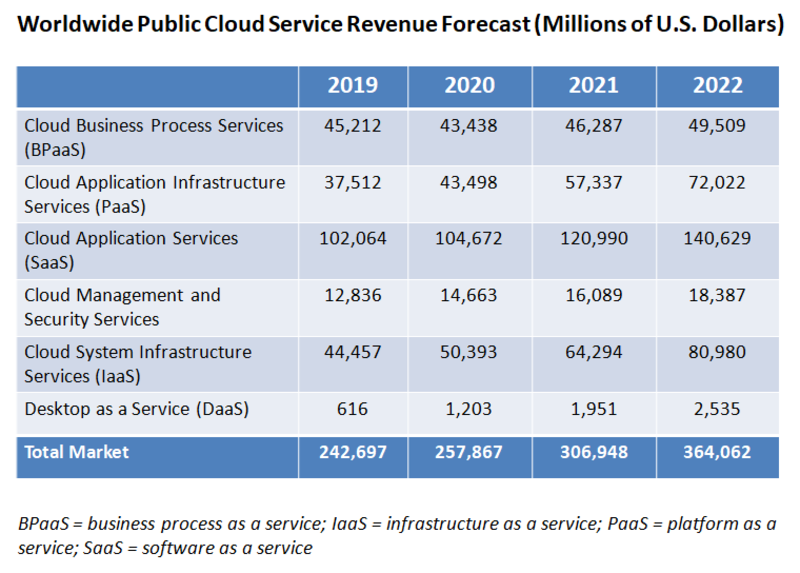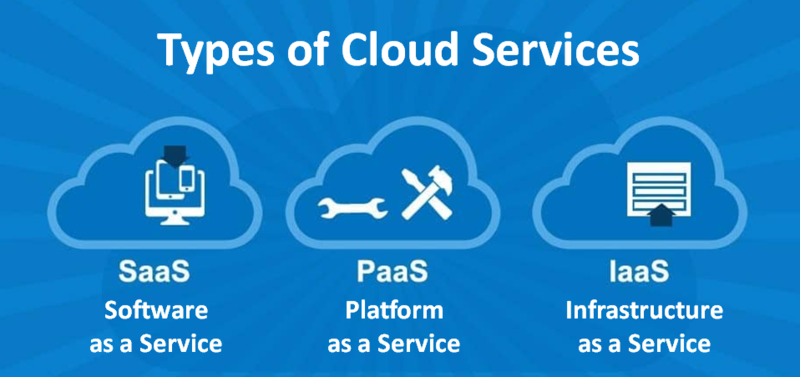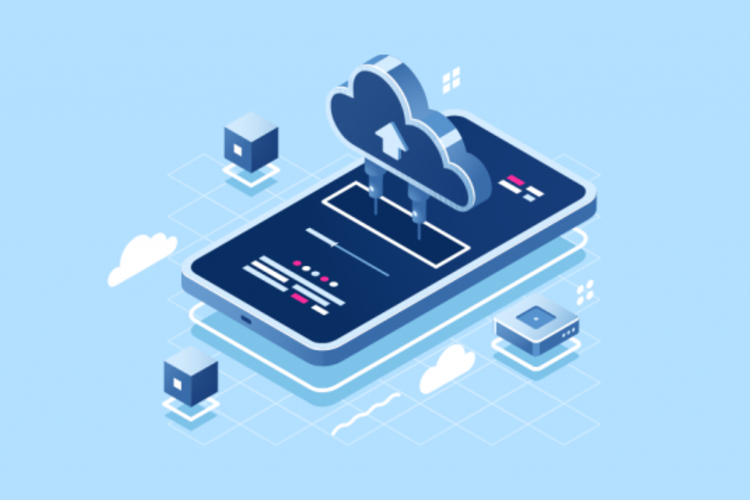Everything You Need to Know About Mobile Cloud Application
- DevOps
- September 1, 2020
App development has come a long way since its inception. The most recent innovation in the field of mobile app development is the ‘mobile cloud application’ or ‘cloud-based app.’
Cloud-based solutions have not only become increasingly popular in the data storage industry, but it has also found widespread applications in many other sectors.
According to Cisco’s Global Cloud Index, cloud data centers will process more than 94 percent of workload and computing processes by 2021.
Moreover, as per a report by Gartner, the total revenue of the cloud services market will reach $257.9 billion in 2020. The Software as a Service(SaaS) will remain the largest market segment as it is predicted to reach $104.7 billion in 2020, growing from $102.1 billion in 2019.

In this blog, I have explained the phenomenon of cloud-based mobile apps. What does a cloud-based application mean? Who are the top players in the industry, and what challenges do cloud services currently face?
Let’s first look at the definition of what a mobile cloud application is before we differentiate it from native apps and web-based apps.
What is a Mobile Cloud App?
A mobile cloud app or cloud-based app is a program that is designed to be accessed by many types of computing devices over the internet.
Traditionally, if you wanted to install a new software program on your PC, you need to purchase a disc and use it to install the program. Once installed, you could use the program on that computer.
A mobile cloud app, on the other hand, is a software program that can be accessed from multiple computers and smartphones as long as they are connected to the internet. The goal behind a mobile cloud application is to enhance productivity by increasing accessibility for users.
With a stable internet connection and a computing device, a user can access the program anytime and anywhere.
Types of Cloud Services
Cloud-based mobile apps can be divided into three different categories. This classification is primarily based on the difference in the architecture of the apps.

SaaS, Software as Service
The Software as a Service (SaaS) model is the largest and most developed type of cloud-based service. Most cloud apps follow the SaaS model and run on third-party hardware located remotely.
Using a SaaS cloud app, users do not have to spend money on storing the program on personal hard drives or buy expensive licenses for software updates. Instead, they can download the software program to the cloud drive and access it from there using the internet.
Some prominent examples of SaaS solutions include Gmail, Google Docs, and Google Drive.
IaaS, Infrastructure as a Service
With the IaaS solution, a third party offers the infrastructure and support in the cloud. The software designer provides applications, in-app support, and middleware.
Middleware is the software between the app and the operating system, which is used to simplify programming and provide extended features to the OS functions. Amazon Web Services, Microsoft Azure, and Google Compute Engine are all examples of the IaaS solution.
All these solutions allow developers to access the same infrastructure that Google, Amazon, or Microsoft use in their products to manage spikes in usage.
PaaS, Platform as a Service
PaaS is a cloud-based solution that requires only the application code from the user’s side.
It eliminates the need to oversee hardware and operating tasks such as software maintenance, equipment procurement by enabling businesses to outsource these tasks so that developers can focus on application development and application support.
The PaaS provider takes care of the hardware and keeps the software up to date. Google App Engine and OpenShift are well-known PaaS solutions.
Read also: IaaS vs PaaS vs SaaS: Major Differences Between Cloud Service Models
Mobile Cloud apps vs. Native Apps
A native app in software development refers to an app that is developed for a particular platform or mobile device. These apps are device-specific, so they can take advantage of the latest technology that comes on mobile devices.
The drawback of writing a native application is that developers have to create multiple versions of the same application if they want it to run on different operating systems.
Since cloud-based apps aren’t downloaded on a mobile device, developers can write a single code, and any device with an internet connection will be able to use it.
Mobile Cloud Apps vs. Web-based Apps
Mobile cloud apps and web-based apps are both similar in the sense that they both run on servers external to the mobile device. Both types of application store data externally and are accessed with a browser via the internet.
However, a web-based app does not always include the scaling and security features of a cloud-based app. The differences between the two types of applications are minimal, especially in terms of how they function on a device.
It can be said that while all mobile cloud apps are web apps, not all web apps are mobile cloud apps.
Read also: Web App vs Cloud App – What Are The Differences and Benefits?
Top Challenges When Developing Mobile Cloud Application
When considering a cloud-based solution, there are two routes that you can take. Your company can either become a cloud provider or can develop a program that runs on a third-party cloud solution.
If you develop your cloud solution, you have to deal with issues such as hardware, security, and data processing logic. In case you choose to build your app on a third-party cloud solution, you have to consider scalability, integration, and selecting the right cloud service provider.
Most developers and service providers usually face the following challenges when developing cloud-based solutions:
Security
Security is a significant concern in cloud-based solutions for most IT specialists. Although there are numerous protocols and policies in place regarding user authentication and access, security remains challenging.
Secure data encryption, use of reverse proxy, and SSL can help developers to increase the security of their mobile cloud app.
Interoperability
Interoperability is another challenge for developers working in the cloud environment. Simply putting, the cloud-based app should be able to run on various devices and integrate with other cloud services.
Since cloud systems do not communicate entirely with each other, developers don’t always get the chance to mix components from different cloud services.
Performance
The app performance and customer experience will likely be affected if the number of servers is small. For optimal conversion rates, the custom UI should be able to load within 3 seconds. Each additional second incurs a loss of traffic and increases the bounce rate.
Tools to Build Cloud-based Apps
Developing a successful cloud-based app begins with using the right tools and choosing the right cloud service vendor. An outdated tech approach and wrong tools will lead to poor performance and cause precious data losses.
To avoid mistakes, here are the reliable cloud service vendors that you can choose for your cloud-based venture:
Amazon Web Services (AWS)
Amazon Web Services (AWS) is one of the leading cloud service providers, with 32 percent of the market share. They are flexible and integrative, with a record of over 140 services designed by Amazon Web Services.
Google Cloud Platform
Google Cloud Platform offers cloud computing, API services, storage, advanced analytics, and virtual machines. It is a PaaS (Platform as a Service) which is flexible and affordable for small businesses and startups.
Microsoft Azure
Microsoft Azure is another popular vendor whose services were designed for enterprises with scaling plans. They provide services such as ML modules, mobile back-end, and database services, among others.
Bottom line
Mobile cloud apps enable users to access the software program with a computing device via the internet. They also provide benefits like cost reduction and a new level of scaling opportunities.
However, it is also complicated in terms of API integration, security, and data architecture planning. That’s why it is advised to work with reliable vendors like AWS and Microsoft Azure for your cloud-based application.













